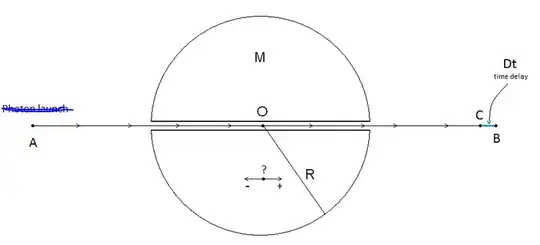The diagram below I have borrowed from another question about Shapiro Time Delay: Impossible dilemma about Shapiro delay and momentum conservation
My question is if Shapiro time delay applies to massive objects. So in the diagram above, imagine A is some mass traveling the path through the mass M. In the case of a photon, Shapiro time delay means the photon will appear to slow its rate of travel as a result of M, at least to a non-local observer. I know the effects of curved spacetime would mean A would accelerate as it moves toward M, and then decelerate as it starts to try to move away from it, again as observed by a non-local observer. But is there also a component of its movement which lowers the velocity due to M?
